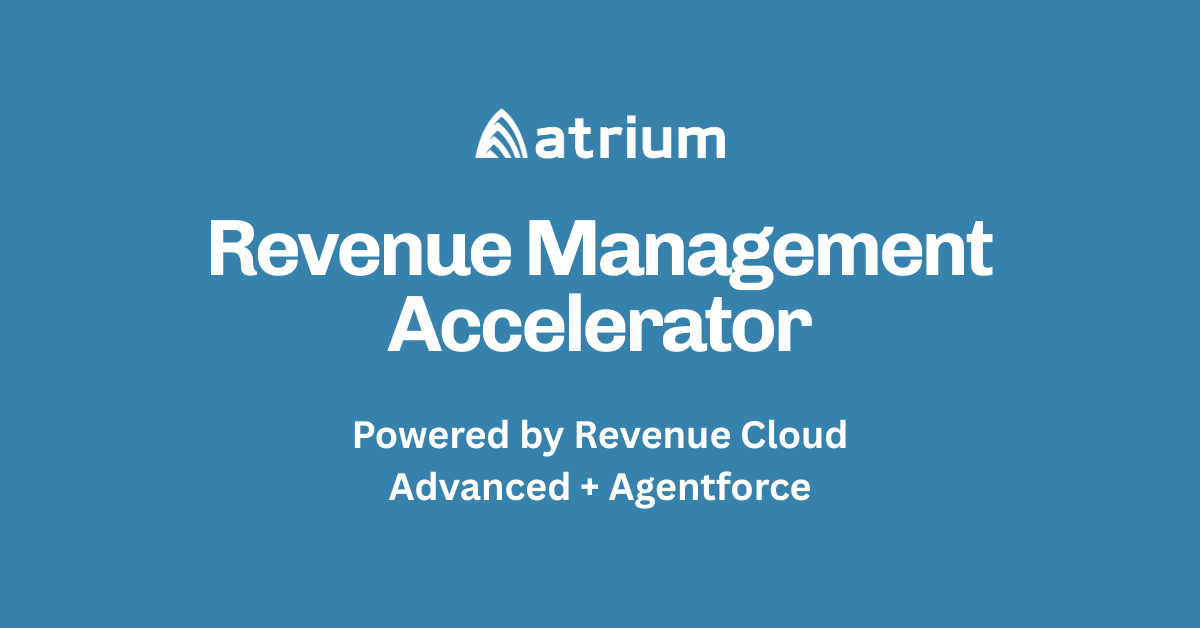For many organizations, the contract process is still a very cumbersome set of activities. Sales closes a deal, and then the real work — and risk — begins: provisioning customers (users), managing entitlements, fulfilling terms, and hoping nothing falls through the cracks. If your business depends on complex agreements, recurring revenue, or multi-product packaging, these challenges only multiply.
Fortunately, it doesn’t have to be that way.
On a recent webinar, we demoed Salesforce Revenue Cloud Advanced (RCA), showing how it can streamline contract operations by tightly connecting the dots between quoting, contracting, fulfillment, and renewals. Below, we unpack some of the key capabilities we shared, and explain why they matter to businesses looking to modernize their revenue operations.
From quote to contract to order, without the gaps
It all starts with the quote. Revenue Cloud Advanced lets you configure complex product bundles, enforce dependencies (e.g., Product A must precede Product B), and apply value-based pricing models. Once approved, quote data seamlessly flows into the sales agreement, ensuring alignment between what was sold and what’s being delivered.
This continuity matters. Instead of manually rebuilding contracts from static quote PDFs, teams get a digital thread: quote → opportunity → contract → order → fulfillment.
Activate the contract, trigger the business
Once a contract is executed, that’s where the magic of RCA really kicks in.
Activating the contract triggers a series of downstream processes:
- Order generation and handoff to billing or provisioning systems
- Asset creation with metadata like product type, quantity, value, and billing details
- Entitlement assignments to specific users — automatically and accurately
Each asset in the contract becomes a managed object with full lifecycle tracking, tied back to the contract, account, and end users. If a customer’s contract includes 15 software licenses and 5 advisory hours, RCA makes sure those resources are provisioned correctly and tracked throughout the customer lifecycle.
Entitlement management that’s automated, not manual
Traditionally, entitlement tracking has been a spreadsheet-driven nightmare. RCA changes that by making entitlements a first-class citizen in the data model.
You can:
- Assign entitlements to individual users at the contract level
- Monitor fulfillment and provisioning statuses (active, pending, suspended)
- Trigger renewals or amendments based on lifecycle milestones
- Surface real-time dashboards to monitor coverage, gaps, and usage trends
This turns entitlement management from a manual process into a scalable, data-driven system, reducing risk and ensuring customers receive what they paid for.
Keep obligations on track (and auditable)
Contracts aren’t just about products — they also come with promises. RCA includes a robust obligations model that helps teams track both internal and third-party commitments, like onboarding kickoffs, support SLAs, or compliance deliverables.
Each obligation can be assigned, scheduled, broken into subtasks, and monitored for status, giving governance and audit teams a single source of truth for what’s been fulfilled, what’s overdue, and what’s at risk.
The power of data equity
One of the most strategic benefits of automating contract operations is data equity — the ability to capture, organize, and reuse contract data for future value. With RCA, every clause, asset, user, and obligation is structured and stored in Salesforce, ready to power AI-driven insights, automate compliance checks, or make renewal predictions.
In other words: your contract data becomes a competitive asset, not just a paper trail.
Ready to transform your contract operations?
If you’re still relying on manual workflows, disconnected systems, or tribal knowledge to manage post-sale execution, Revenue Cloud Advanced can help you turn contracts into a true engine for revenue and customer success.
Watch the on-demand webinar to see the full demo in action, and learn how leading companies are using RCA to automate complexity, reduce risk, and deliver on customer commitments at scale.








